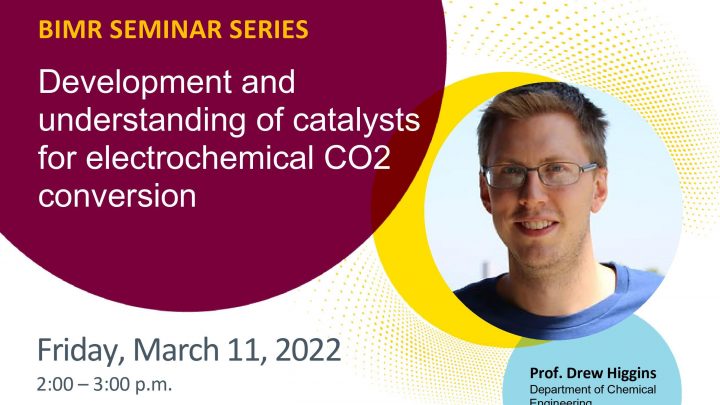Development and understanding of catalysts for electrochemical CO2 conversion
Mar 11, 2022
2:00PM to 3:00PM

Date/Time
Date(s) - 11/03/2022
2:00 pm - 3:00 pm
Categories
For electrochemical energy conversion and storage technologies to become viable component of future sustainable energy infrastructures, the development of catalysts that are active, selective, stable and inexpensive is required. This talk will focus on electrochemical CO2 conversion into fuels and chemicals that are essential to life as we know it. Particularly, the talk will discuss an exciting class of catalyst materials — atomically dispersed nickel-nitrogen-carbon catalysts (Ni-N-C) catalysts that have active site structures that mimic those of molecular (homogeneous) catalysts but are immobilized within a conductive graphitic support material. Ni-N-C catalysts can provide excellent activity and selectivity for the electrochemical conversion of CO2 into CO, however elucidating the structures and properties of the catalyst that governs performance has been challenging owing to the heterogeneous structure and chemical species present in the materials. This talk will discuss research efforts on the synthesis and advanced characterization to gain insight into the specific active site structures and properties of Ni-N-C catalysts, as well as highlighting performance capabilities of these materials.
Bio:
In January 2019, Drew began as an Assistant Professor in Chemical Engineering at McMaster University, where his research focuses on sustainable electrochemical energy technology development. Particularly, his team focuses on applications including electrochemical CO2 conversion, rechargeable zinc-ion batteries, supercapacitors, water electrolyzers and biomass valorization processes. Their research covers the synthesis of new nanostructured electrode materials and their integration into electrochemical technologies, as well as developing advanced understanding of material performance through the development and implementation of in situ characterization techniques. Previously Drew completed his PhD in Chemical Engineering at the University of Waterloo in 2015, with his thesis involving the synthesis, characterization, and device integration of nanostructured oxygen reduction catalysts for low temperature fuel cells. During this time, he spent approximately one year at the Los Alamos National Laboratory working. In 2015, Drew started a Banting Postdoctoral Fellowship at Stanford University in the Department of Chemical Engineering and in 2017 he was promoted to an Associate Staff Scientist at Stanford University / SLAC National Accelerator Laboratory, where he oversaw research activities focusing on discovering and understanding new electrocatalyst compositions and structures for a variety of important electrochemical reactions, including water oxidation, CO2 reduction, oxygen reduction and methane activation. More details are available at: https://www.higginslab.com/.

